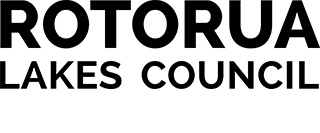Uike Kātoanga’i ‘o e Lea Faka-Tonga: Tongan Language Week 2017
Sunday, 3 September 2017
Mālō etau lava!
Have you been keeping up with us over Pacific Island Language Weeks 2017? This week, we continue our celebrations with Tongan language week. In thinking of this year’s theme, Fakakoloa ‘A Aotearoa ‘Aki ‘Ae Nofo a Kainga – Enriching Aotearoa with Our Family Values, we’ve drawn inspiration from Queen Sālote Tupou III of the Kingdom of Tonga (1900-1965) who proclaimed,
…our history is written, not in books, but in our mats.[1]
Historical events and genealogical histories are commemorated in a variety of textiles made by Tongan communities.[2] For Tongan language week, we’re focusing on ngatu (decorated bark cloth). Ngatu are highly valued in Tongan society and are considered a form of koloa (wealth) that is displayed and exchanged in ceremonial events such as weddings and funerals.[3] Within Aotearoa, ngatu is still collected and used to adorn the homes of Tongan families, museum galleries as well as interior spaces across the country.
Rotorua Museum holds five ngatu in its collection and we’re working hard to uncover their unique stories, and how they’ve come into our possession. One such item includes a fragment of a large ngatu (1991.38). This item came into the collection as a loan in 1991 by a donor known only as ‘Mrs. Roberts.’
Ngatu is created using the inner bark of hiapo (paper mulberry trees) which is cultivated specifically for tapa-making. The inner bark is beaten with an ike (wooden mallet) against a long wooden tutua (anvil) to spread the fibres into thin sheets called feta’aki. Layers of feta’aki are pasted together using starchy root vegetables and are, simultaneously, rubbed onto patterned blocks called kupesi. From the raised surface of the kupesi, the initial decoration emerges. When the bark cloth has dried, the final decoration is done by overpainting with vegetable dyes.
The first indication that this fragment was part of a larger ngatu was the langanga – a measuring unit used in ngatu production which is indicated along the sides of the ngatu by the numbers ‘33’ and ‘35’.
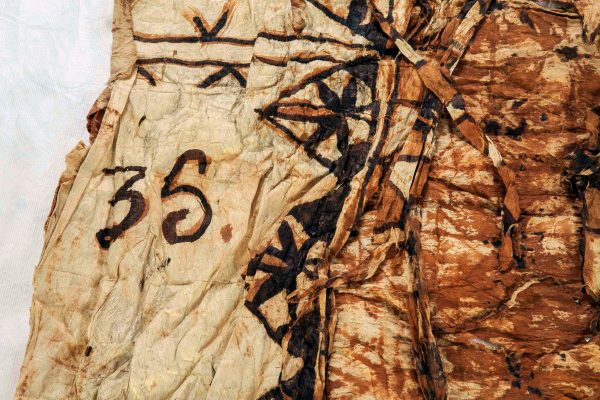
Ngatu (Langanga detail). Maker unknown. Date unknown. On long-term loan from ‘Mrs. Roberts’ to Rotorua Museum Te Whare Taonga o Te Arawa (1991.38)
This ngatu features both abstract and naturalistic motifs. Further in from the langanga are vertical borders made up of triangle patterns called manulua, based on the so-called ‘vane swastika’ which is a widespread motif in the Pacific.[4]
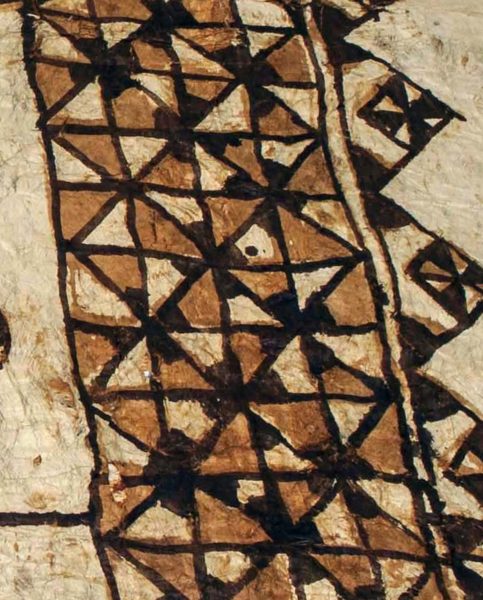
Ngatu (Manulua detail). Maker unknown. Date unknown. On long-term loan from ‘Mrs. Roberts’ to Rotorua Museum Te Whare Taonga o Te Arawa (1991.38)
Many of the motifs repeated across the ngatu can be found on the Royal Standard of Tonga which is also imprinted in the Sila ‘o Tonga (Tongan coat of arms). Each quarter of the royal standard is represented in this ngatu; a cluster of three figurative stars make reference to the three main groups of islands in the kingdom: Tongatapu, Ha’apai and Vava’u. These stars are grouped with a dove figure which represents peace, unity and Christianity.
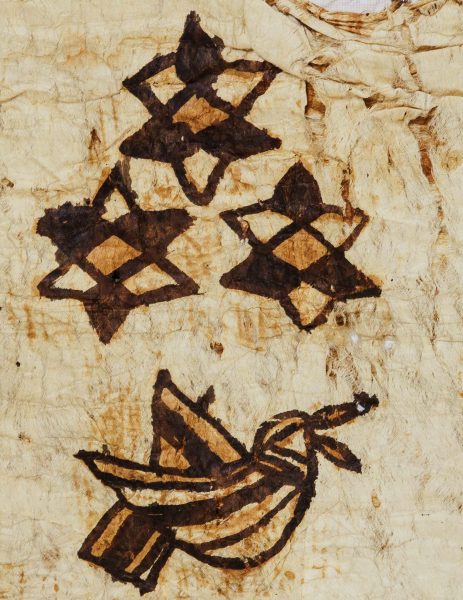
Ngatu (Dove and stars detail). Maker unknown. Date unknown. On long-term loan from ‘Mrs. Roberts’ to Rotorua Museum Te Whare Taonga o Te Arawa (1991.38)
Another motif used in this ngatu is the crown which references the Kingdom of Tonga. The crown features a garland – a symbol of the judicial authority of the chief in the time before the kingdom. The garland also represents the royal dependence of God’s grace.
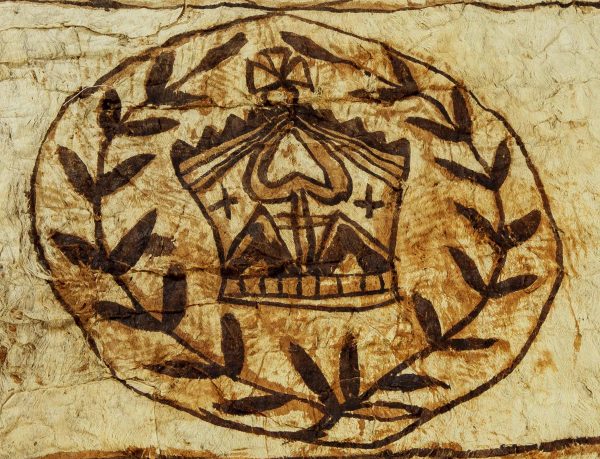
Ngatu (Crown and garland detail). Maker unknown. Date unknown. On long-term loan from ‘Mrs. Roberts’ to Rotorua Museum Te Whare Taonga o Te Arawa (1991.38)
A unique feature of Tongan ngatu is the incorporation of text. This ngatu features the text ‘KOE KALAUNI’ which means the crown and is a direct reference to the Tongan monarchy.
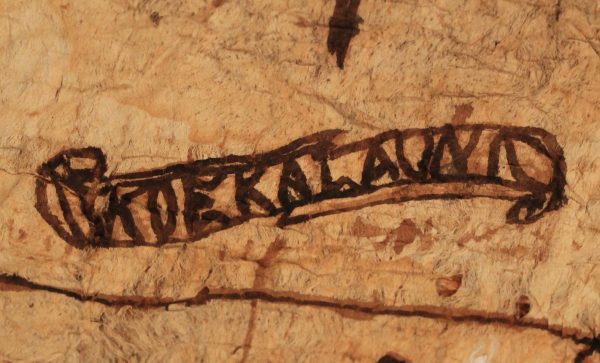
Ngatu (Koe Kalauni detail). Maker unknown. Date unknown. On long-term loan from ‘Mrs. Roberts’ to Rotorua Museum Te Whare Taonga o Te Arawa (1991.38)
The sword motifs symbolise the three Royal dynasties of Tu’i Tonga, Tu’i Ha’atakalaua and Tu’i Kanokupolu to which the royal house traces its descent.
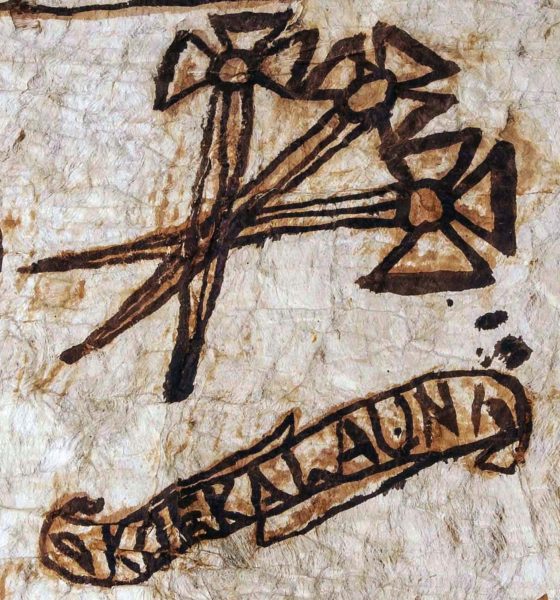
Ngatu (Sword detail). Maker unknown. Date unknown. On long-term loan from ‘Mrs. Roberts’ to Rotorua Museum Te Whare Taonga o Te Arawa (1991.38)
As a curator and Tongan woman living in Aotearoa, I feel enriched when we are able to find parts of ourselves reflected in museum collections. Finding this ngatu has been a great way to equally enrich our Tongan communities in Rotorua and Aotearoa with the same feeling.
Footnotes
[1] Adrienne L. Kaeppler, The Pacific Arts of Micronesia (Oxford; New York: Oxford University Press, 2008).[2] Roger Neich, Mick Pendergrast, Pacific Tapa (Auckland, New Zealand: David Bateman Ltd., 1997).
[3] Phyllis Herda, “The Changing Texture of Textiles in Tonga” in The Journal of Polynesian Society, Volume 108, No 2, 1999.
[4] Roger Neich, Mick Pendergrast, Pacific Tapa. (Auckland, New Zealand: David Bateman Ltd, 1997)
Feta’aki = Sheets of tapa fibres
Hiapo = Paper mulberry, Broussonetia papyrifera
Ike = Wooden mallet
Kie Hingoa = Named mats
Koe kalauni = The Crown
Koloa = Wealth, possessions or what one values
Koka’anga = Collective of women producing ngatu
Kupesi = Patterned blocks
Langanga = Measuring unit for counting used in ngatu production
M?l? etau lava = Hello
Manulua = Motif used on tapa, based on ‘vane swastika’
Ngatu = Tongan tapa cloth
Sila ‘o Tonga = Tongan Coat of Arms
Tutua = Anvil


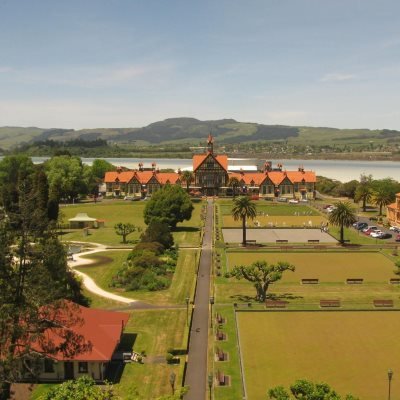
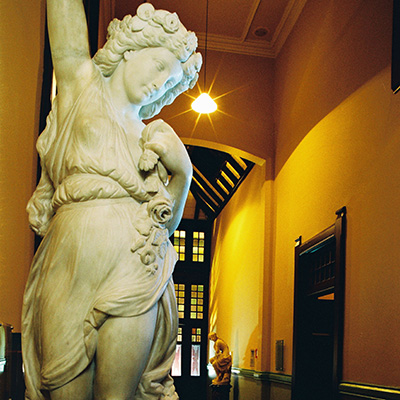




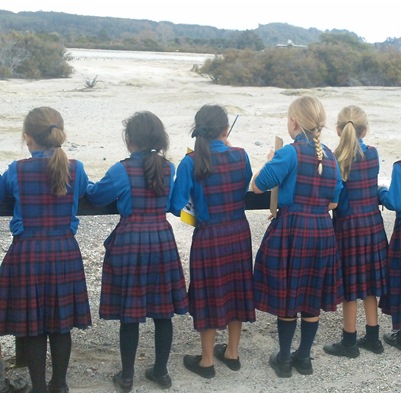
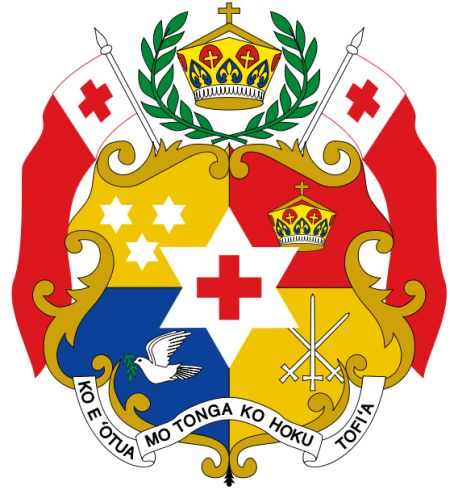
 LEAD EXHIBITIONS CURATOR
LEAD EXHIBITIONS CURATOR